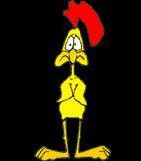|
|
||
|
||
|
Privacy Policy | Editorial Policy | Profit Policy | Join the Association | List of Members | Contact us | Index | Links |
||
|
Back Go to page: 1 2 3 4 5 6 7 8 9 10 11 12 13 14 15 16 17 18 19 20 Forward |
||
|
Out in the shed with Ted. |
||
|
|
||
|
|
||
|
Welcome to Kedron-Wavell Services Club. Located in the vibrant Chermside precinct, only 15 minutes north of Brisbane’s CBD, the Club is Brisbane’s award winning, premier function, entertainment and leisure destination.
With a cosmopolitan atmosphere and elegant features, Kedron-Wavell Services Club is the perfect place to meet your family and friends… or meet new friends! We’re easy to find and offer free off-street parking for members and guests.
Click the pic above to go to the Club's web site
|
||
|
|
||
|
Contents.
|
||
|
My memories of my time in Vung Tau.
|
||
|
|
||
|
|
||
|
Carer Payments.
People who receive carer allowances will receive a boost to their payments from 1 January 2022. The Carer Allowance rate, which supports people who are providing additional daily care to someone with a disability, medical condition, or an adult who is frail aged, will increase by $4.60 to $136.50 per fortnight.
|
||
|
|
||
|
Australia and Australians.
The following had been written by the late Douglas Adams of "Hitchhiker's Guide to the Galaxy" fame.
"Australia is a very confusing place, taking up a large amount of the bottom half of the planet. It is recognisable from orbit because of many unusual features, including what at first looks like an enormous bite taken out of its southern edge; a wall of sheer cliffs which plunge into the girting sea. Geologists assure us that this is simply an accident of geomorphology, but they still call it the "Great Australian Bight", proving that not only are they covering up a more frightening theory but they can't spell either.
The first of the confusing things about Australia is the status of the place. Where other landmasses and sovereign lands are classified as continent, island or country, Australia is considered all three. Typically, it is unique in this.
The second confusing thing about Australia is the animals. They can be divided into three categories: Poisonous, Odd, and Sheep. It is true that of the 10 most poisonous arachnids on the planet, Australia has 9 of them. Actually, it would be more accurate to say that of the 9 most poisonous arachnids, Australia has all of them. Any visitors should be careful to check inside boots (before putting them on), under toilet seats (before sitting down) and generally everywhere else. A stick is very useful for this task.
The last confusing thing about Australia is the inhabitants. A short history: Sometime around 40,000 years ago some people arrived in boats from the north. They ate all the available food, and a lot of them died. The ones who survived learned respect for the balance of nature, man's proper place in the scheme of things, and spiders. They settled in and spent a lot of the intervening time making up strange stories. They also discovered a stick that kept coming back.
Then, around 200 years ago, Europeans arrived in boats from the north.
More accurately, European convicts were sent, with a few deranged people in charge. They tried to plant their crops in autumn (failing to take account of the reversal of the seasons), ate all their food, and a lot of them died. About then the sheep arrived and have been treasured ever since. It is interesting to note here that the Europeans always consider themselves vastly superior to any other race they encounter, since they can lie, cheat, steal and litigate (marks of a civilised culture they say), whereas all the Aboriginals can do is happily survive being left in the middle of a vast red-hot desert - equipped with a stick.
Eventually, the new lot of people stopped being Europeans on 'extended holiday' and became Australians. The changes are subtle, but deep, caused by the mind-stretching expanses of nothingness and eerie quiet, where a person can sit perfectly still and look deep inside themselves to the core of their essence, their reasons for being, and the necessity of checking inside their boots every morning for fatal surprises. They also picked up the most finely tuned sense of irony in the world, and the Aboriginal gift for making up stories. Be warned.
There is also the matter of the beaches. Australian beaches are simply the nicest and best in the world, although anyone actually venturing into the sea will have to contend with sharks, stinging jellyfish, stonefish (a fish which sits on the bottom of the sea, pretends to be a rock and has venomous barbs sticking out of its back that will kill just from the pain) and surfboarders. However, watching a beach sunset is worth the risk. As a result of all this hardship, dirt, thirst and wombats, you would expect Australians to be a sour lot, instead, they are genial, jolly, cheerful, and always willing to share a kind word with a stranger. Faced with insurmountable odds and impossible problems, they smile disarmingly and look for a stick. Major engineering feats have been performed with sheets of corrugated iron, string, and mud.
Alone of all the races on earth, they seem to be free from the 'Grass is greener on the other side of the fence' syndrome, and roundly proclaim that Australia is, in fact, the other side of that fence. They call the land "Oz" or "Godzone" (a verbal contraction of "God's Own Country"). The irritating thing about this is... they may be right.
Tips to surviving Australia
How to identify Australians
|
||
|
|
||
|
|
||
|
Windows Media Player turns 30.
30 years ago, Microsoft introduced the first version of Windows Media Player, then just called “Media Player” as part of “Windows 3.0 with Multimedia Extensions.” Since then, it’s morphed and changed dramatically over time. Here’s a look at its history.
Bringing Audio and Video to Windows
Early versions of Windows didn’t support audio and video playback. Computers at the time typically weren’t powerful enough: Audio and video data took up a lot of storage space, relatively speaking, and advanced codecs that compressed high-quality audio and video had not been invented yet. Also, in many cases, the early PC hardware itself did not support high-quality audio or video playback.
Around the turn of the 1990s, multimedia PCs with enhanced graphics cards and sound cards that could play digitized sound samples and wavetable audio became more common. In that atmosphere, Microsoft decided to update its Windows 3.0 operating environment to support multimedia recording and playback. The company released Windows 3.0 with Multimedia Extensions on October 20, 1991.
For the first time, Windows included sound and video capabilities. Windows 3.0 with Multimedia Extnesions could play MIDI files, record and play back digitized audio, play music from CDs, play sounds on startup and error events, and more. Some of those capabilities came thanks to a new app called Media Player. At first, Media Player could only play MMM animation files, commonly called MultiMedia Movie Format (RIFF RMMP) out of the box, however, it could be extended to play other formats, and in future versions of Windows, Media Player’s abilities grew.
The story of Windows Media Player is long, circuitous, and hard to grasp in its entirety. Over time, Media Player absorbed (and branched off into) other media technologies at Microsoft. For example, in 1992, Microsoft released Video for Windows, which allowed digital video playback in the form of AVI files on Windows for the first time. In 1996, Microsoft released ActivePlayer (later called “DirectShow”) for playing media files and NetShow Player for streaming video. Eventually, all these technologies (and many more) would get rolled into the Windows Media Player brand.
As Windows Media Player grew in complexity, it added support for visualizations, skinning, CD playback and ripping, DRM-protected audio and video (that could be sold through the Internet), and media library management support. Over the years, Windows Media Player has appeared on many versions of Windows, the Mac, Windows CE and PocketPC devices and even on Sun’s Solaris operating system.
A few notable moments in Windows Media Player history
Decoding the complete history of Windows Media Player is like navigating a maze full of conflicting and confusing version numbers, abandoned Microsoft technologies and the slow aggregation of software bloat over time. It’s even hard to exactly pinpoint when “Media Player” became “Windows Media Player,” perhaps around version 5.0. Here are just a handful of notable events in the Media Player timeline.
The Crazy Skins
Released in 2000, Windows Media Player 7 supported changing the player’s interface for the first time, similar to WinAmp, which preceded it. To do so, you could download files known as “skins” that could dramatically alter the look and layout of Windows Media Player’s controls.
Skins soon became a way for people to further personalize their Windows experience and people frequently used skins that featured their favorite media properties, actors, models, and musical groups. There were also wild futuristic or alien-like skins that seemed more fashionable than practical, but people loved them anyway.
The multimedia playback landscape is somewhat confusing in Windows 11 today. The OS ships with Groove Music, an audio player and library similar to iTunes that traces its origins back to Zune Music in 2006. Windows 11 also includes the Movies & TV app, which allows rentals and purchases of streaming video content, itself descended from the Xbox Video service.
Windows Media Player hasn’t been significantly updated since 2012, but it lives on in Windows 11. There are rumours that Microsoft is preparing a major update or replacement for the application based on an accidental leak of a new app called simply “Media Player.” Until we know more details, the traditional Windows Media Player is still with us.
Happy Birthday, Windows Media Player!
|
||
|
|
||
|
|
||
|
What are computer cookies?
We all know cookies as tasty baked treats that we love to eat, but computer cookies are quite different. Although they’re most popularly known as just “cookies”, they may be referred to as browser cookies, Internet cookies, HTTP cookies, web cookies, computer cookies, or digital cookies.
What are cookies?
Cookies are pieces of information that a website can save in your browser. Websites can ask your browser to save cookies whenever the browser asks it for a page, picture, download, or any other piece of information. Until the cookie expires, the browser will keep it, and send it back to the website whenever it requests anything else.
The language web browsers and websites use to talk to each other is “stateless”, meaning that every message is totally independent and isolated from every other message. It’s like having a conversation with somebody who instantly forgets who you are after every sentence. One of the most common uses for cookies is to provide a link between messages, so that a website can remember who you are, and tell that your messages are coming from the same individual. To do this, a website sends a web browser a cookie with a unique ID the first time they communicate, and the web browser repeats the unique ID back to the website every time it sends a message.
In the language of the web, cookies allow us to link sentences into conversations.
Without this functionality we would not be able to log in to any websites, keep wish lists, see recommendations, use web-based video or instant messaging, or do most of the other things for which we rely on websites. Websites can read their own cookies, but can’t read cookies saved by other websites, however, there is a loophole that has led to most of the problems we have come to associate with cookies: third-party cookies.
Tracking with third-party cookies
Many people associate cookies with the cross-site tracking used by advertising companies. Advertisers like Google and Facebook can track users as they travel around the web from site to site, building up profiles of the kinds of sites they like to visit, and showing them targeted advertising. Tracking somebody across multiple sites like this relies on third-party cookies. Although a website can only read cookies that it has created, individual web pages can be assembled from components hosted by multiple websites. Sometimes those components are visible, like images, and sometimes they are just bits of code you can’t see. If a website you visit includes a component pulled from another website (a third-party), that third-party website can send and receive cookies along with the component. If you visit a different website that includes the same third-party component, the third-party can read its cookies on both sites.
This is how Facebook uses its Like buttons and Google uses its advertising code, to track you across the web. They can tell whenever you visit a site that includes one of their components because they can read their own cookies, however, the tracking stops if you block or delete those cookies.
Session cookies, persistent cookies, and “super cookies”
Just like edible cookies, digital cookies come in different flavours. Cookies that expire whenever you close your browser are called session cookies. These are used for temporary things, like telling a website that you have logged in successfully. If a website uses session cookies for its logins then you will be logged out when you close your browser and you will have to log in again when you next visit. Cookies that aren’t deleted when you close your browser are called persistent cookies. Persistent cookies last until you delete them, or until they expire. These are useful for things like remembering your username, so it can be pre-filled when you visit a website you have logged out of. For all practical purposes, persistent cookies can last forever. (On 32-bit systems cookies can’t live past 2038, but we assume you’ll be using a different device by then.)
Because third-party tracking can be defeated by users deleting their cookies, some unscrupulous advertisers have turned to other things that can offer cookie-like persistence, such as ETags or browser fingerprints. Technologies that act like cookies, but aren’t affected by blocking or deleting regular cookies, are unofficially referred to as super-cookies.
So, are cookies bad?
No. Cookies are essential to the operation of the web as we know it and used for many useful, helpful things, however, cookies can also be used for things some people don’t like, such as third-party tracking, and adverts that seem to follow you around the web. Luckily, cookies are easy to control. All browsers let you delete cookies and there are numerous browser add-ons that can be used to block cookies, or control what cookies you will and won’t allow.
In response to increased sensitivity about cross-site tracking, some browsers, including Firefox, Safari, and Brave, now block third-party cookies by default. Google is working on an alternative, more privacy-conscious tracking technology called FLoC, and plans to block third-party cookies in 2023.
Cookie consent. In the European Union (EU), websites have to ask for your consent before they can set cookies, which has led to web users seeing a profusion of cookie popups. Some people argue that this has led to “cookie fatigue“, and that privacy has not been improved. What happens if you decline to accept cookies varies from site to site, and can range from the site working perfectly to the site not working at all.
Will a VPN stop tracking cookies?
No. A Virtual Private Network (VPN) guards your privacy by masking your IP address and your location and by passing your traffic through an encrypted tunnel that protects it from rogue WiFi hotspots, or ISPs that want to sell advertisers information about your browsing habits. To block or rewrite cookies, a VPN would have to look at your web traffic as it passed through its servers. VPNs can’t read encrypted communication, like HTTPS, so cookie blocking would be impossible for most web traffic. Even it was possible it would probably cause some websites to malfunction and if that could be overcome, privacy-loving VPN users would probably rather their VPN provider stayed out of their traffic anyway.
|
||
|
|
||
|
|
||
|
What is the Dark Web?
You may have seen the Dark Web referenced in popular TV shows and have got the wrong idea. The Dark Web is also sometimes called the Deep Web, when in fact the Dark Web is only a part of the Deep Web.
Surface Web is what we would call the regular World Wide Web that is indexed and where websites are easy to find. The Deep Web is the unindexed part of the Web. Actually, anything that a search engine can’t find. The Dark Web is intentionally hidden, anonymous, and widely known for illicit activities. Maybe it’s a good idea to clear up some of the misconceptions about the Dark Web for those that are not in the know. That should tell you a lot about what it really is.
The Dark Web is a separate part of the World Wide Web
Well, it’s not as much separate, but sites on the Deep Web are harder to find as the Deep Web is an unindexed part of the internet. Actually, the indexed part of the Web, which is the part that can be found by robots, is only a small fraction of the entire web. It is hard to tell how big the Dark Web is, since, again, it is unindexed. Estimates say that only 5% of the Web is easily accessible and searchable to the general public. Many other sites can only be visited if you have a direct URL.
Only criminals use the Dark Web
Even though most of the traffic on the Dark Web is used up by criminal activities, such as:
As you can see there are some grey areas, depending on where you stand in a certain situation.
You need a special browser to access the Dark Web
There are several methods of restricting access to many of the resources on the Dark Web, but you can certainly expect you will have to login when you arrive at the site that you want to access. But in most cases, you will also need to be using some kind of service like a VPN, proxy, or an anonymized network.
For sites with an Onion (hence the symbol) domain, you will need a Tor browser to access them. This browser protects your privacy and anonymity by encrypting your traffic to and from the websites you are visiting, and by using a proxy. But if you are a Firefox user, you may see a big resemblance with the Tor Browser, so the browser is not that special. It’s the way that it connects that is different. You can also use Tor on the surface Web. People often do this for privacy reasons.
Surfing the Dark Web is dangerous
If you take the necessary precautions, surfing the Dark Web will not get you hurt, robbed, and mugged, but, like on the surface Web, you have to be vigilant and be protected. Keep in mind, for example, that torrents often bypass your proxy settings and might, therefore, expose your real location and, needless to say, when you’re actively dealing with criminals, you can actually expect to get deceived and even robbed. So, stay away from those guys.
But as we recently learned, even the bad guys are not always safe on the Dark Web. People do get careless after a while and in these cases, it got the bad guys busted. Keep that in mind if you make it a habit to visit the darker corners of the Web.
Curiosity killed many a cat.
|
||
|
|
||
|
|
||
|
Imagination?
The short 2 minute video below, which purports to have been made in 1956 and which has done the rounds of the interweb and been watched by and believed by thousands of people predicts all sorts of wonderous things, like fast trains, robots and computers. It also predicts the outbreak of Covid and tells us from where it originated. It’s Nostradamus at his very best.
|
||
|
|
||
|
But like a lot of these videos – it’s not serious, it’s a joke and was actually made in 2020.
|
||
|
|
||
|
Ask me how I went on the Melbourne Cup – no, don’t!
|
||
|
|
||
|
|
||
|
Lamb.
The annual lamb for Australia Day adverts are always fun but this one in its full form is great. Some subtle one liners and visual gags you may not grab on a first view.
For the aviation minded – which airport is in the last scene?
This ad was produced to promote Australian lamb for the 2021 Australia Day celebrations and focused on the State border lock downs during the Covid outbreaks. It's clever theme is, "Make Lamb.....not Walls", and features Australian "Lambassador" Sam Kekovich in the starring role.
They only ever show a very short version of this ad on TV, but this full version is worth viewing and would rank as one of the best Australian ads ever with a huge cast of extras.
|
||
|
And here's the 2022 version.
|
||
|
|
||
|
|
||
|
|
||
|
|
||
|
|
||
|
Hope you all had a wonderful, happy and healthy Christmas and that the New Year allows us to return to some sort of normal life without that dreaded scourge controlling everything we do.
|
||
|
|
||
|
If you’re looking for me – I’m out!!
|
||
|
|
||
|
|
||
|
|
||
|
Blessed are those who are cracked for they are the ones who let in the light.
Ok, ok - I'm going back to my room now!
I'm Ted Mac - and you're not!
|
||
|
|
||
|
Back Go to page: 1 2 3 4 5 6 7 8 9 10 11 12 13 14 15 16 17 18 19 20 Forward |
||
|
|




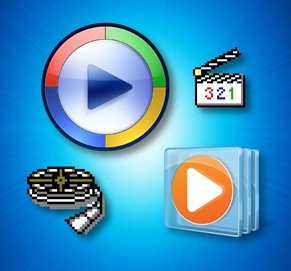
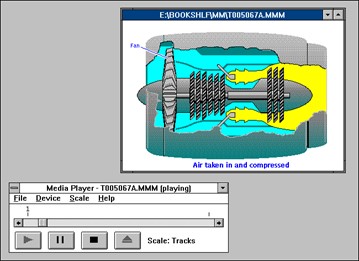
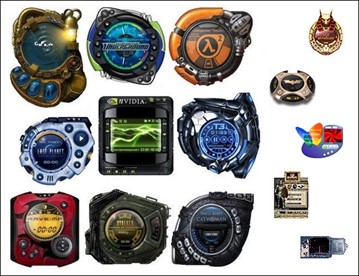


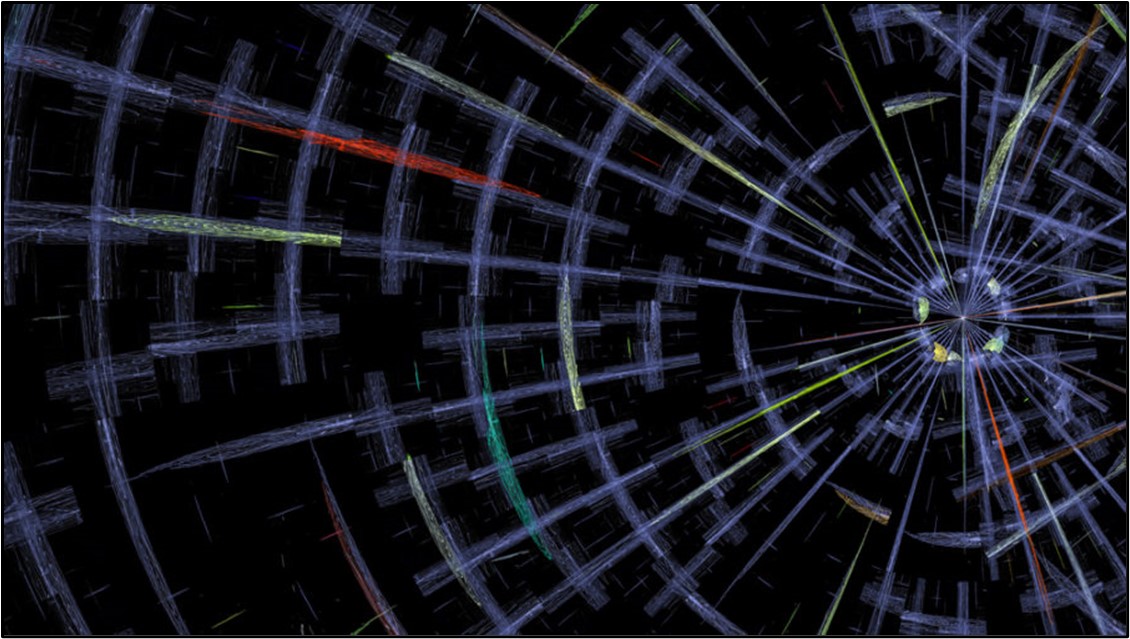
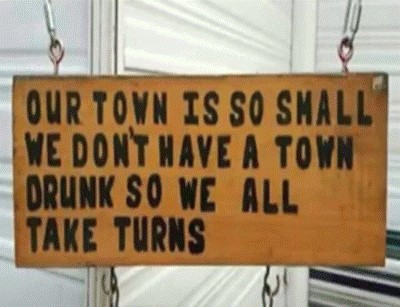
.jpg)



